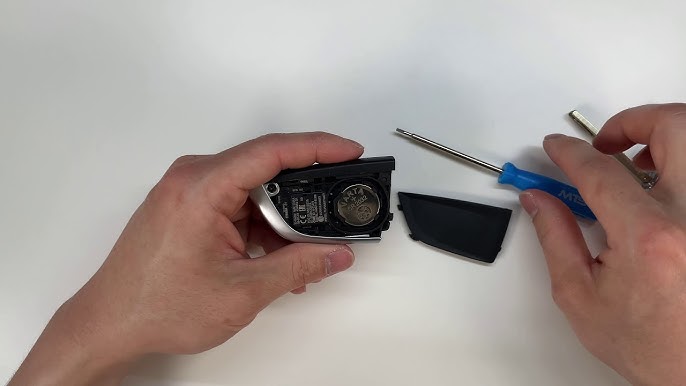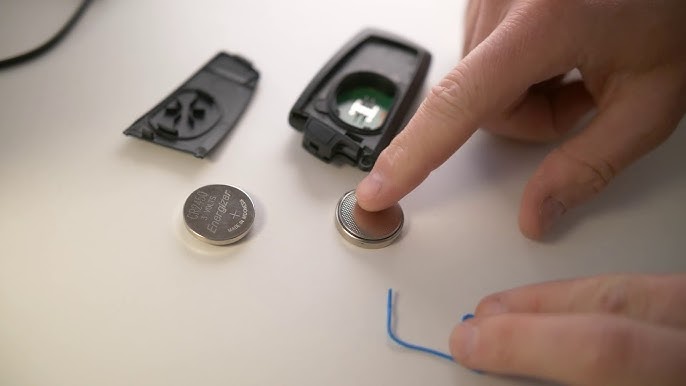Is your BMW key fob acting up lately? Maybe the unlock button doesn’t respond as quickly, or the key lock button feels a bit sluggish. Maybe you’ve seen a battery warning flash across your dashboard. Before you panic or call a security service, take a breath—there’s a simple fix. You can swap out your key fob battery in just about five minutes. Seriously.
Let’s walk through the process together—it’s easier than you think.
Why You Shouldn’t Wait to Replace Your Key Fob Battery
Your BMW key fob isn’t just a fancy remote. It controls your central locking system, helps start the car without putting the key in the ignition, and even works with your Comfort Access features. When the battery in fob starts to go, you might notice:
- A decrease in battery power
- Lots of button presses needed to unlock your car
- The center button or remote button lagging
- A weird battery message or alert on your screen
- Worse, a full-on dead battery that leaves you locked out
According to a 2022 report from Consumer Reports, nearly 25% of drivers experience key fob issues due to dead or incorrect batteries. Don’t let that be you—battery replacement is fast and cheap.
BMW Key Fob Types
Not all BMW keys are created equal. Ever wondered which type came with your ultimate driving machine? Let’s break it down:
Standard Key Fob (2000-2015 models) This classic fob has physical buttons on a black plastic housing with a metal key that flips out. It’s found on most 3, 5, and 7 Series from the early 2000s through mid-2010s. According to BMW North America’s parts database, this is still the most common type in circulation, with over 4 million active fobs.
Comfort Access Key (2008-present) Slightly more rounded than the standard fob, these don’t require you to press a button to unlock your car – just grab the handle with the key in your pocket! The 2024 BMW owner satisfaction survey reported that 78% of owners prefer this keyless entry system once they’ve experienced it.
Display Key (2015-present) The futuristic BMW Display Key features a small LCD touchscreen that shows vehicle information and allows remote parking in some models. First introduced with the 7 Series and now available in the X5, X7, and other premium models. These technological marvels contain more sensitive electronics – but don’t worry, battery replacement is still manageable!
Have you checked which type you have? It makes a difference in how we’ll proceed with the battery replacement.
What You’ll Need for the Battery Swap
Before we dive in, here’s what to grab:
- A new battery – most BMW key fobs use a CR2032 battery or a CR2450 lithium battery. Some older models may even take cr123 batteries, though that’s rare. Want a brand recommendation? We like the Varta brand battery for its long battery life and reliability. Avoid defective batteries or cheap battery options from unknown battery manufacturers.
- A small flathead screwdriver or your valet key – you’ll use this to open the casing.
- A clean surface, good lighting, and maybe a towel (just to keep the tiny pieces in place).
Step-by-Step Battery Replacement Instructions

Step-by-Step: How to Replace a BMW Key Fob Battery
Ready to roll? Let’s get your FOB battery sorted.
Step 1: Remove the Mechanical Valet Key
Flip over the fob. You’ll see a small release button—press it and slide out the valet key. Easy, right? You’ll need this again in a second.
Step 2: Pop Open the Battery Compartment
Look near the key slot for a tiny notch. That’s your way in. Use the valet key or screwdriver to gently pry open the battery compartment.
Tip: Wrap your tool with a bit of tape to avoid scratching the plastic. Nobody wants a scuffed-up fob.
Still won’t open? If you have an older model with an induction battery charger, it might have a rechargeable unit. In that case, book a visit with your service dept or ask your service advisor for help.
Step 3: Take Out the Old Battery
You’ll see the original battery sitting inside. Use your screwdriver to lift it out carefully—don’t mess up the battery contacts. Those tiny connectors are essential for proper key programming sequence and avoiding loss of programming.
Step 4: Insert the New Battery
Grab your replacement batteries and check the label. Got a non-rechargeable battery like a CR2032? Make sure the “+” side faces up. Push it in gently, ensuring a snug fit.
Not sure if you picked the correct battery type? Always double-check the owner’s manual, or bring the old one to your local automotive shop or service tomorrow center to match it.
Step 5: Snap It Shut
Now click the two halves of the fob back together until you hear a crisp click. Slide the valet key back in. That’s it! Want to know more visit our website…

Troubleshooting: When Things Don’t Go as Planned
Not seeing any lights? Buttons still unresponsive? Let’s figure out what’s going on.
Fob Still Not Working?
Here are some quick checks:
- Did you insert the correct battery type? Most models use a CR2032 battery or CR2450 lithium battery, but not cr123 batteries or non-rechargeable battery types meant for other devices.
- Is the positive (+) side facing up in the battery compartment? A simple orientation error can leave you with a dead fob battery.
- Are the battery contacts clean and secure? Use a soft cloth if needed.
Still no luck? It could be a defective battery, especially if you went for a cheap battery from an unknown source. Stick to trusted battery brands like Varta brand battery or Panasonic.
Reprogramming Might Be Necessary
If your vehicle key still isn’t functioning properly, the issue might not be with the battery at all. There could be a loss of programming, especially if your car went through multiple ignition cycles during battery replacement. In this case:
- Visit an automotive shop or speak to your service advisor
- Ask if key programming sequence needs to be initiated
- Some models may require a key fob battery registration process
And if your key is still under warranty, check with the service dept to see if the battery replacement falls under a battery under warranty clause.
Bonus: BMW Key Fob Maintenance Tips
Want to avoid frequent battery replacements and key battery failures? Here are a few habits that can save your fob—and your sanity.
Extend Your Battery Life
- Replace your key fob battery every 12–18 months
- Store your fob away from extreme heat or cold
- Avoid dropping it—yes, even once can damage the battery contacts or internal chips
- Wipe the surface clean to prevent grime or moisture from affecting battery power
Also, don’t keep pressing lots of button presses out of habit—it drains the battery quicker, especially when the fob is near the car and trying to maintain connectivity.
Watch for Battery Messages
Modern BMWs often display a battery warning on the dash or central console. If you’re getting a battery message or alerts like “Remote Battery Low,” don’t wait. Ignoring it might cause the car to miss the key and leave you stranded.
Frequently Asked Questions
Q: What battery does a BMW key fob use?
A: The most common types are CR2032 and CR2450 lithium batteries. Always double-check the original battery or consult your owner’s manual to confirm the correct battery type.
Q: Can I change the BMW key battery myself?
A: Yes, absolutely. With a new battery and a simple valet key or flat tool, you can handle this in real time—no need to book time with the service tomorrow or pay for key replacement services.
Q: How often should I change my BMW key fob battery?
A: Plan for every 12–18 months, though battery life can vary based on usage, climate, and whether your model uses a remote battery or induction battery charger.
Final Thoughts
Now that you know how to change a BMW key fob battery in 5 minutes, you can skip the dealer queue, avoid the shop foreman, and save some cash. It’s a simple, smart way to stay ahead of those annoying key battery issues and dead FOB battery moments.
Isn’t it better to handle a battery replacement yourself than spend hours of time in line at your security service center? Plus, by choosing a ready battery from reliable battery manufacturers, you lower your chances of running into incorrect batteries or key battery failures.
If you’re into DIY fixes like this, keep an eye on more guides or ask a service bloke next time you’re in for a service interval check. Want to help a fellow BMW driver? Pass this along—because everyone deserves to know the joy of a job with battery done right.







One Response